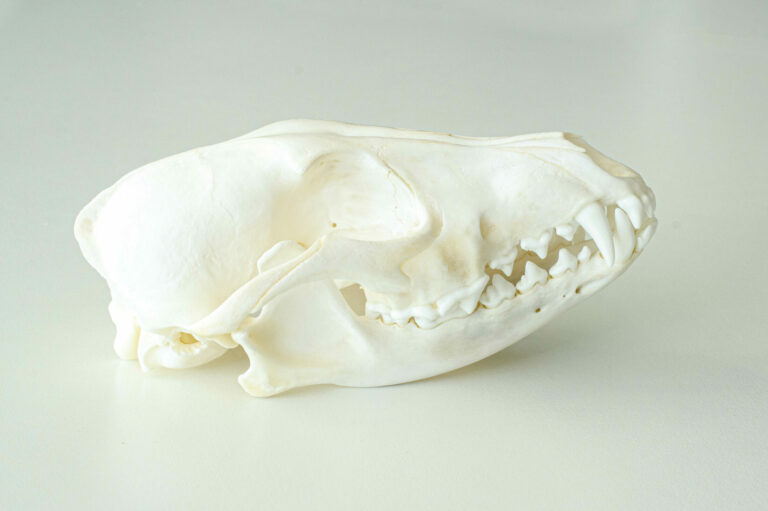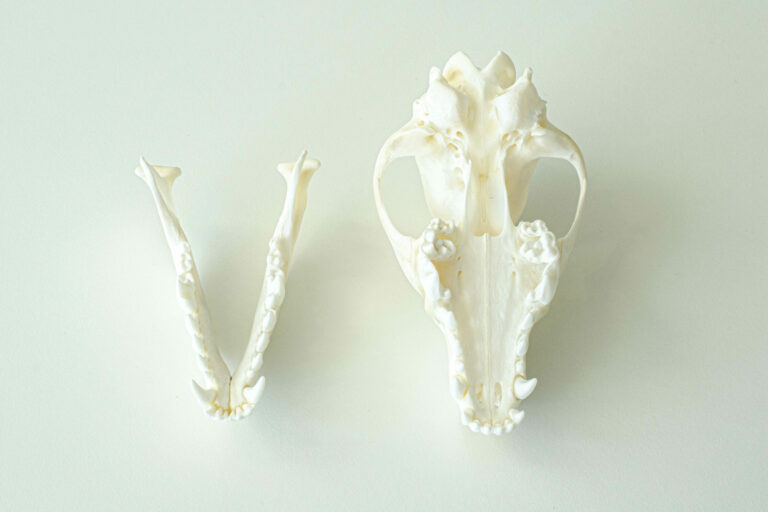Canis aureus
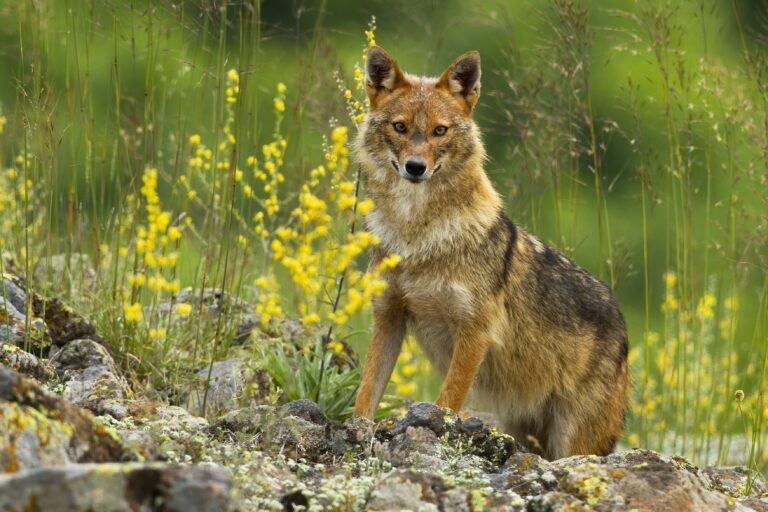
Threats to native species – distribution – parasitization – diseases
70 – 100 cm
7 – 15 kg
5 – 6 Years
Jan – Feb
62 Days
4 – 5
Wetlands – Fields – Settlements
Burrows
Crepuscular / nocturnal
Hibernation
Wolf – sea eagle
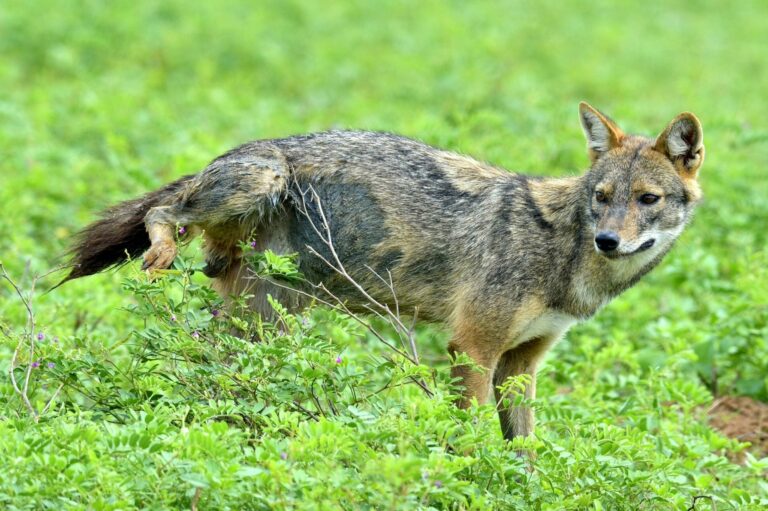
Distribution
The golden jackal is widespread in many parts of Asia and as the only jackal species also in Europe. There, its occurrence has been limited so far especially to the Balkan region, from there it spread in the last decades in a natural way more and more to Central, Eastern and Southern Europe. The golden jackal was first recorded in Italy in 1985, in Austria in 1987 and in Switzerland in 2011. For Germany, there was the first record of a male golden jackal in the south of Brandenburg in 1996.
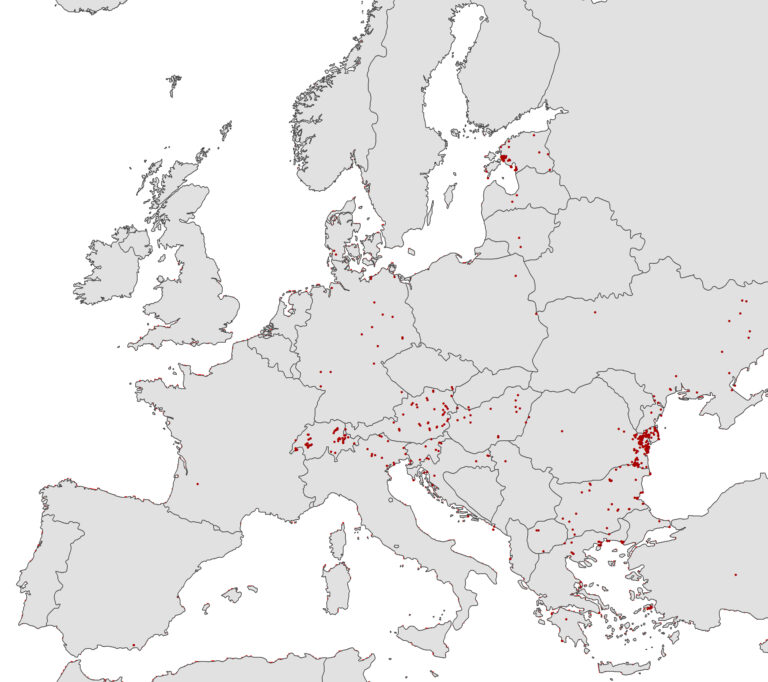
Future
Due to the lack of naturally occurring enemies, apart from the wolf (Canis lupus), as well as the great adaptability of the golden jackal, a further future spread in Europe is very likely. Moreover, in some countries such as Germany and Switzerland, the golden jackal is not included in the list of huntable species in the Federal Hunting Act, but is listed in the Fauna-Flora-Habitat Directive (Habitats Directive, Annex V), which contributes to its protection and favors further spread.
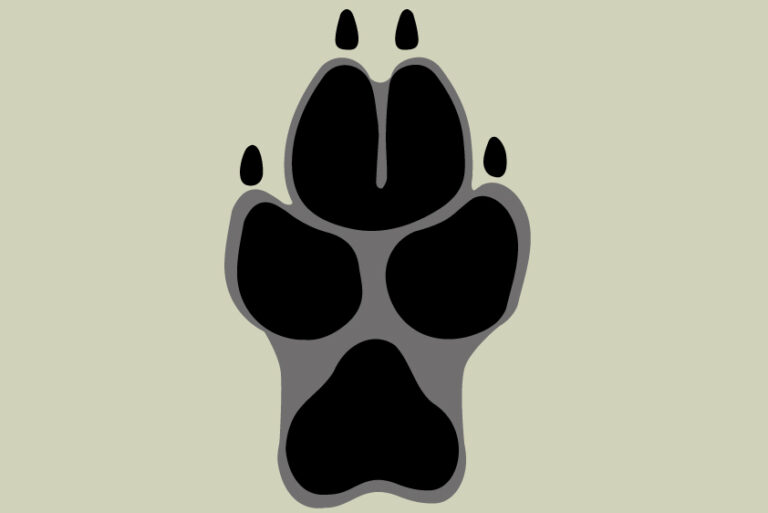
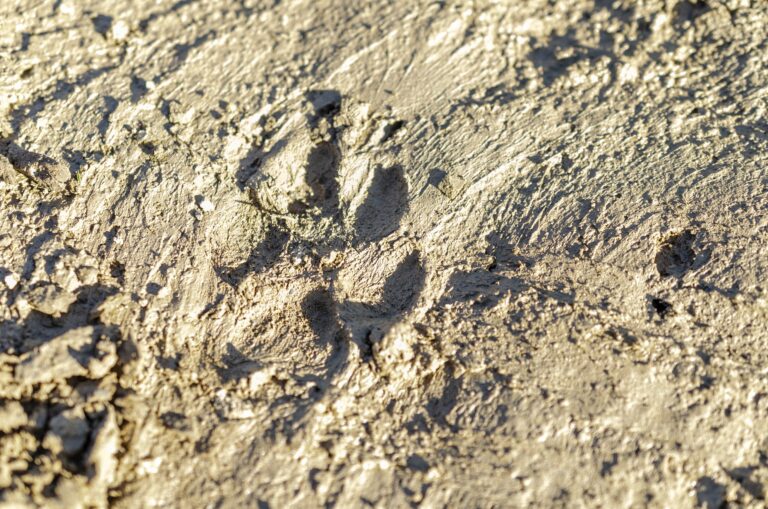
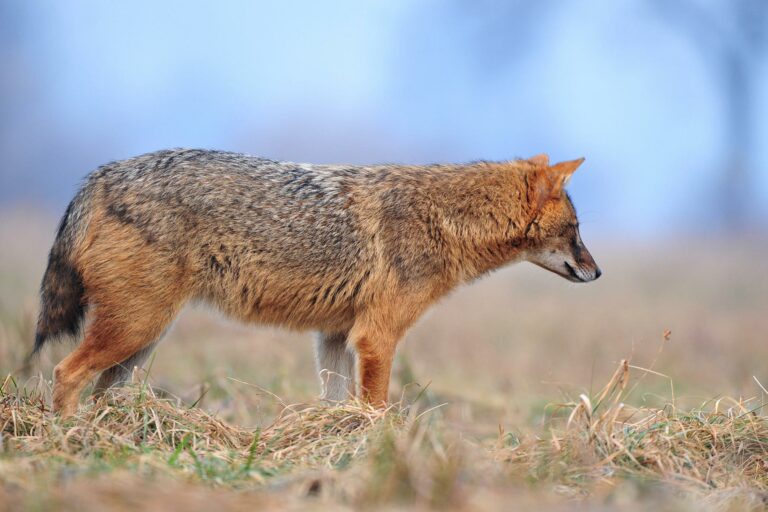
Between wolf and red fox
With a body length of up to 90 cm and a tail length of up to 30 cm, the golden jackal is somewhat smaller than the wolf but larger than our native red fox. The fur is reddish brown colored, from the back of the head along the back to the tip of the tail the hair is dark to black. The lower muzzle as well as the neck are characterized by a lighter patch of fur. The external appearance can vary in terms of coat coloration between different areas. A distinctive feature of the golden jackal are the middle toe pads, which have grown together in the shape of a horseshoe.
Habitat
The golden jackal is also not particularly choosy when it comes to habitat selection. Preference is given to areas where there is both enough food and sufficient hiding places in the form of undergrowth or other structures. During the day, the animals retreat to their shelter, often taking over already existing burrows of other animals.
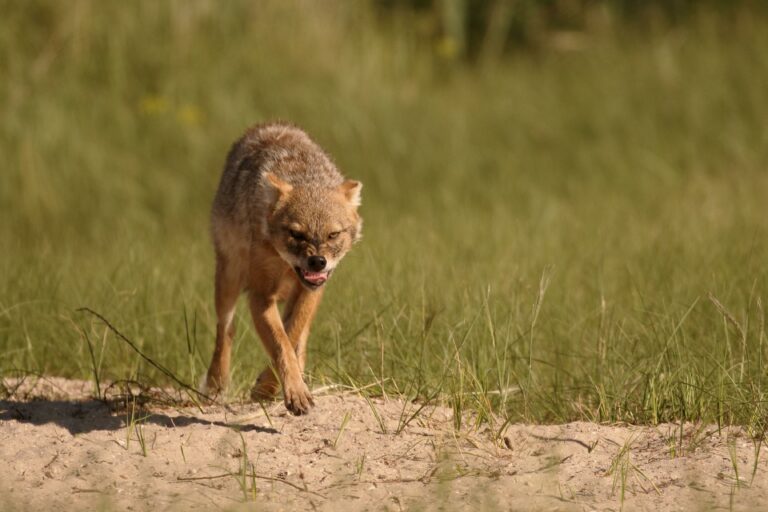
Behavior
Canis aureus lives preferably as a pair and only rarely in packs. The golden jackal is crepuscular to nocturnal and moves in core territories of up to 3 square kilometers, these territories are defended in case of danger. At the age of about one year the animals become sexually mature, once male and female have found each other they stay together for life. The mating season is between January and February, per litter up to 5 pups are born. Often, after rearing, a young animal remains with the parents to help care for the next litter.
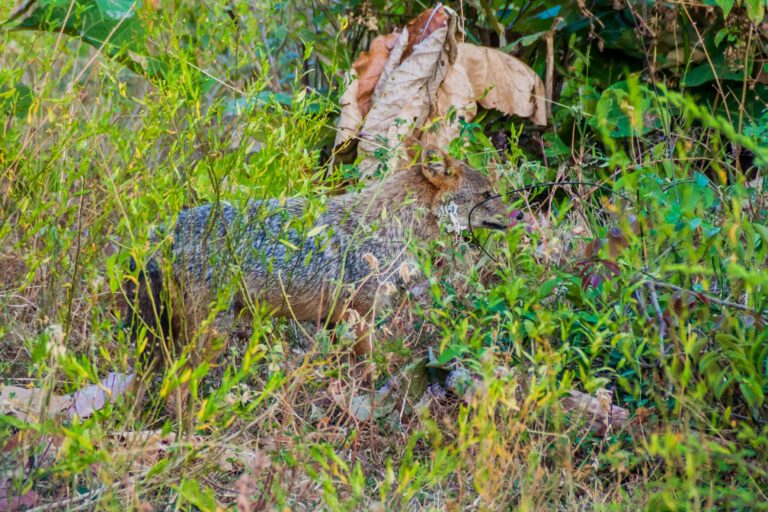
Nutrition
The season and habitat affect the food supply of the golden jackal, but as a food generalist, it is highly adaptable. As a predator, it feeds primarily on smaller mammals, as well as insects, amphibians, and fish. However, plant food, carrion or anthropogenic food resources are also used.
